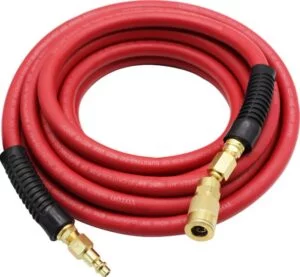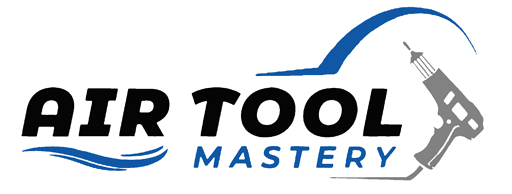Air hoses are an essential component in numerous industrial, automotive, and construction applications. They serve as conduits for compressed air or gas, powering various tools and machinery, and enabling the efficient execution of tasks. The significance of selecting the appropriate air hose cannot be overstated – the type, size, and fittings of the hose directly influence performance, safety, and longevity of equipment.
Different hose types offer varying levels of flexibility, temperature resistance, and durability, while hose size affects air flow and pressure. Fittings, on the other hand, ensure secure and leak-proof connections. Hence, understanding these attributes is crucial when choosing an air hose that best suits the application at hand.
Role of Hoses in Air Compression
Before delving into the specifics of air hoses, it is essential to understand their role in air compression systems. In a typical compressed air system, the compressor compresses atmospheric air and stores it in a tank at high pressure. When needed, this air is released through a hose using an attached tool or device. Therefore, the hose acts as a conduit between the compressor and the point of use, delivering compressed air at a desired pressure and flow rate.
Types of Air Hoses [Materials]
There are many types of hoses out there. Every hose has unique characteristics and properties that make it suitable for particular applications. However, the most common types of air hoses are rubber, PVC (Polyvinyl Chloride), polyurethane, and hybrid hoses.
1. Rubber Hoses
Rubber is a versatile material commonly used in various industrial applications – hence its popularity in air hoses. It offers excellent flexibility, durability, and resistance to abrasion, heat, and chemicals. These qualities make rubber hoses ideal for heavy-duty applications where the hose is subjected to rough handling or harsh environments.
2. PVC Hoses
PVC hoses are made from a synthetic plastic polymer called polyvinyl chloride. They are known for their lightweight, low cost, and high flexibility – making them a popular choice for home and DIY use. However, PVC hoses are less durable than rubber hoses and have a lower working pressure range.
3. Polyurethane Hoses
Polyurethane (PU) is a synthetic material known for its exceptional mechanical properties – high strength, toughness, and abrasion resistance. PU hoses are lightweight, flexible, and can withstand harsh environments making them perfect for industrial use. However, they are more expensive than other types of hoses.
4. Hybrid Hoses
Hybrid hoses are a combination of rubber and PVC materials. They offer the best of both worlds – the flexibility of rubber and the lightweight design of PVC. Hybrid hoses are suitable for general purpose applications where durability and cost-effectiveness are important factors to consider.
Hose Sizing and Selection [Factors to Consider]

1. The Right Length
The length of the air hose is one of the critical factors in its selection. It is important because it determines the reach and mobility of your tools. If the hose is too short, it will restrict your movement and limit your working area. Conversely, a hose that is too long may result in power loss due to the increased friction and pressure drop over the extended length.
Air hoses commonly come in lengths of 25, 50, and 100 feet. A 25-foot hose is typically sufficient for small jobs or for use in a confined workspace. However, for larger tasks or for areas that require a wide range of movement, a 50-foot or even a 100-foot hose may be more appropriate. It’s important to remember that with length comes increased weight and reduced portability, so it’s essential to find a balance between the reach you need and the hose’s manageability.
By carefully considering the length of the hose, you can ensure efficient operation of your tools while maintaining a comfortable and safe working environment.
2. The Right Diameter
The diameter of the air hose is also a crucial factor in its selection. It determines the volume of air that can flow through the hose, which directly affects the performance of your tools.
Standard air hoses come in three sizes: 1/4 inch, 3/8 inch, and 1/2 inch. The most commonly used size is the 3/8 inch, which provides a good balance between air flow and hose flexibility. However, for high-powered tools or applications that require a higher volume of air, a 1/2 inch hose may be necessary.
It’s important to note that using an air hose with too small of a diameter can result in increased pressure drop and reduced power to your tools. Similarly, a hose with too large of a diameter can add unnecessary weight and make it more challenging to handle.
By understanding the air flow requirements of your tools and selecting the appropriate hose diameter, you can maximize their performance and efficiency while minimizing any potential drawbacks.
3. Material Matters
Another key aspect to consider when selecting an air hose is the material it’s made of. The most common materials used in air hoses are rubber, PVC, and hybrid (a combination of rubber and PVC).
Rubber hoses offer excellent durability and can withstand high temperatures and pressures. However, they tend to be heavier, less flexible, and more expensive than other options.
PVC hoses are lightweight and highly flexible, making them perfect for portable applications. However, they are not as durable and may become brittle in extreme temperatures.
Hybrid hoses combine the best of both worlds, offering flexibility and durability at a reasonable cost. They typically have a rubber inner layer for strength and an outer PVC layer for flexibility.
Ultimately, the material you choose will depend on your specific needs and preferences. Be sure to consider factors such as temperature range, durability, and flexibility when selecting the right material for your air hose.
4. The Maximum Working Pressure
In addition to size and material, it’s crucial to consider the maximum working pressure of your air hose. This is the amount of pressure a hose can handle before bursting or leaking.
It’s essential to match the maximum working pressure of your air hose with that of your compressor and tools. Using a hose with a lower maximum working pressure can result in safety hazards and reduced performance.
On the other hand, choosing a hose with a higher maximum working pressure than your tools and compressor can lead to unnecessary strain on equipment and potentially cause damage.
To ensure safety and optimal performance, always check the maximum working pressure of your air hose before use and make sure it is compatible with your tools and compressor.
5. Standard vs Recoil Hoses
Standard hoses are the ones that come to mind when you think of an air hose – a straight, flexible tube that connects your compressor to tools. These hoses typically come in various lengths and diameters, allowing for customization based on your needs.
Recoil hoses, on the other hand, are spring-shaped and expand when pressurized. They are compact and easy to store, making them perfect for portable applications. However, recoil hoses are not suitable for high-pressure applications and have a shorter lifespan compared to standard hoses.
It’s essential to consider your specific usage when choosing between a standard or recoil hose. If you need a versatile, durable option for heavy-duty applications, a standard hose is the way to go. But if portability and compact storage are crucial factors for you, then a recoil hose might be a better choice.
Other Air Hose Fittings

Understanding the fittings for air hoses is crucial as they ensure a secure connection between the hose and the air tool. The most common fittings for air hoses are couplers. Couplers are fittings that allow for easy and quick connection to air tools. They come in various sizes, shapes, and materials to fit different types of hoses and tools.
Another common fitting is the plug, which is a male fitting attached to the hose’s end. Plugs are designed to fit into couplers, creating a secure connection between the hose and tool.
The last category of fittings are barbed fittings and quick-connect fittings. Barbed fittings have ridges or barbs that grip onto the inside of the hose, creating a tight seal. Quick-connect fittings are designed for easy and quick connections, making them perfect for applications where frequent changes of tools are needed.
When selecting fittings for your air hose, it’s crucial to ensure that they are compatible with both the hose and tool you are using. It’s recommended to stick with fittings from the same manufacturer as your hose, to ensure a proper fit and avoid any potential leaks.
Maintenance and Care
Proper maintenance and care of your air hose are crucial for its longevity and safety. Regularly inspecting your hose for wear and tear is essential, as this can lead to potential hazards or decreased performance. Pay attention to any kinks, cracks, or abrasions on the hose’s surface and replace it if necessary.
Keeping your air hose clean is crucial for maintaining its performance. Dirt and debris can clog up the inside of the hose, reducing airflow and potentially damaging your tools. If you notice any buildup in your hose, rinse it out with warm water and allow it to dry completely before use.
Storing your air hose properly is also important for its maintenance. Avoid leaving it in areas with extreme temperatures or direct sunlight, as this can cause the hose to deteriorate faster. It’s best to store your air hose in a cool, dry place, preferably hanging on a hose reel or coiled neatly for easy access and protection from damage.
Conclusion
In a nutshell, selecting the right air hose size and fittings is crucial for efficient and safe operation. Consider the type of application, length, material, and pressure requirements when choosing the appropriate hose. Always check for compatibility between your hose and fittings before making a purchase to avoid potential leaks or performance issues. Proper maintenance and care of your air hose will ensure its longevity and safety while in use.

